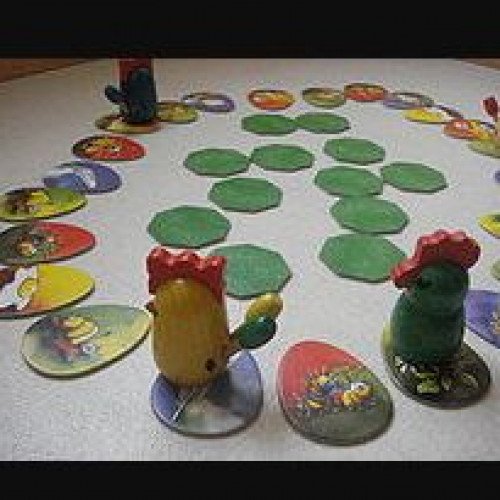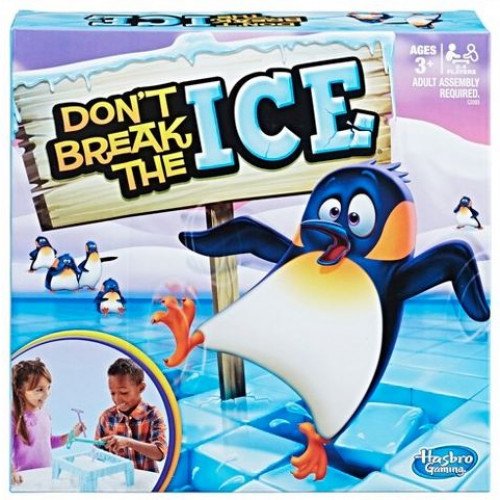"CHICKEN CHA CHA CHA" vs "DON'T BREAK THE ICE"

CHICKEN CHA CHA CHA
Chicken Cha Cha Cha (original German name: Zicke Zacke Hühnerkacke) is a board game for two to four players from four years onwards. It was designed by Klaus Zoch and self-published. It was illustrated by Doris Matthäus . The game was awarded the special prize for children's games in the Spiel des Jahres competition in 1998. The game consists of 24 egg-shaped plates with twelve pictures of chickens, rabbits, hedgehogs, flowers and other things to be found at a henhouse, two plates of every design, and twelve octagonal plates with the same illustrations as the egg-shaped plates. These octagonal plates are placed in the centre of the board, face down, and shuffled. The egg-shaped plates are then shuffled and placed in a ring around the octagonal plates, face up. Each player gets a specifically coloured chicken, which has a tail feather of the same colour. The chickens are placed at equal distances on the ring around the board. On a player's turn, he/she chooses one of the octagonal plates and turns it face up. If it's the same illustration as on the egg-shaped plate in front of the player's chicken, the chicken moves to that plate and the player's turn continues. If it's a different illustration, the player's turn ends. The octagonal plates are then turned back face down. If a player's chicken is directly behind another player's chicken, he/she must find the illustration in front of the other player's chicken. If this succeeds, his/her chicken jumps over the other player's chicken and takes all of its feathers. The player who first gets all feathers of every chicken wins the game.
Statistics for this Xoptio

DON'T BREAK THE ICE
Don't Break the Ice is a children's tabletop game for two to four players ages 3 and up. Marketed by Schaper Toys in 1968, the game is now manufactured by Hasbro subsidiary Milton Bradley. The game is played with a set of plastic "ice blocks," a stand, and included miniature hammers (to break out the ice blocks without letting Ice Man fall). One ice block is larger than the rest, and either a man (referred to "Ice Man" in the game), a polar bear, or Phillip the Penguin, stands on this block. The stand is turned upside down and the ice blocks placed into the frame, so that the "shared" uniform compression of the blocks pressed against each other will cause them to stay in place when the stand is turned upright. The players take turns removing ice blocks by tapping with the hammers. The game ends when one player "breaks the ice," causing the man, bear, or Phillip the Penguin to fall through. The player who smashed the ice blocks without "breaking the ice" is the winner.